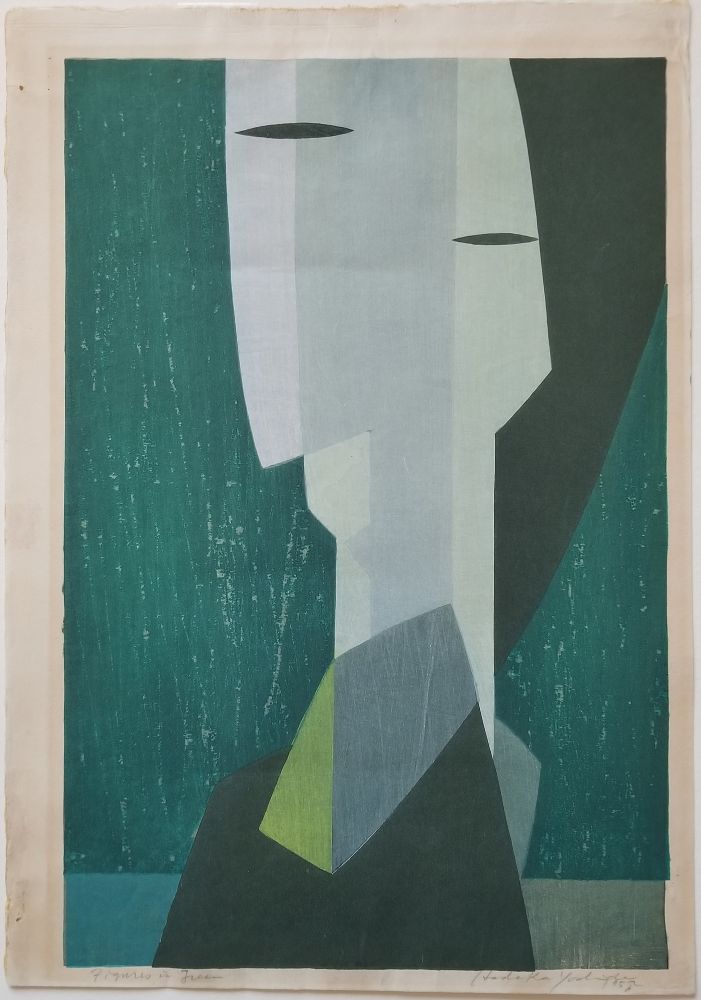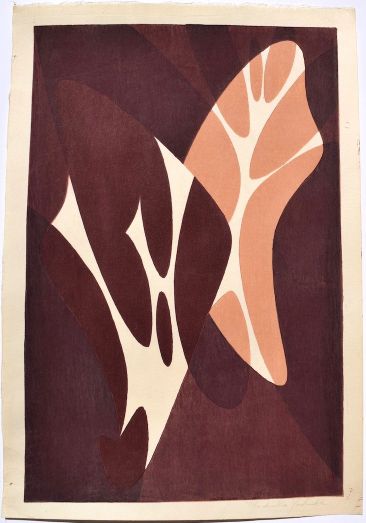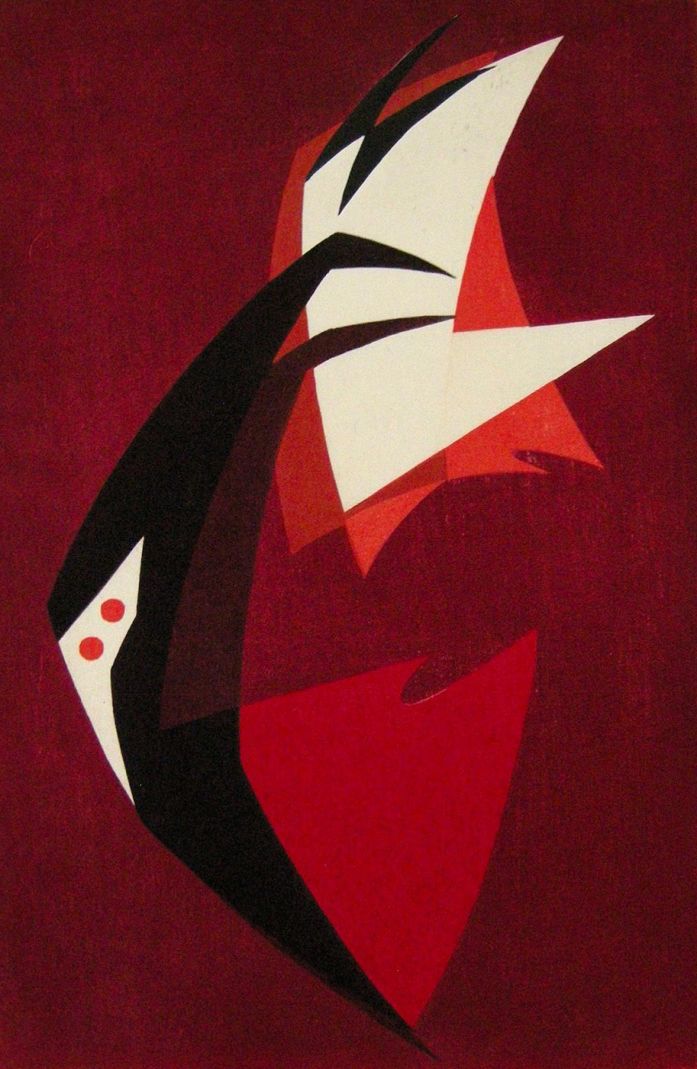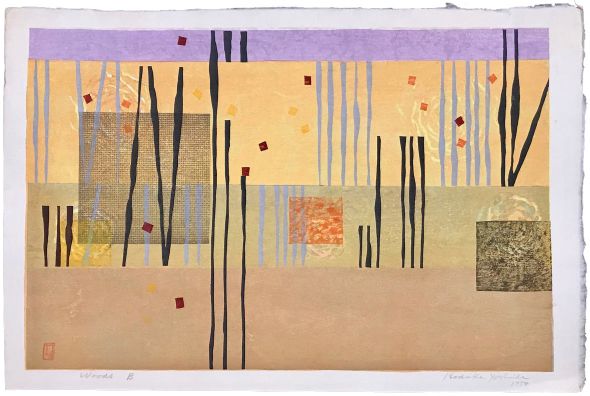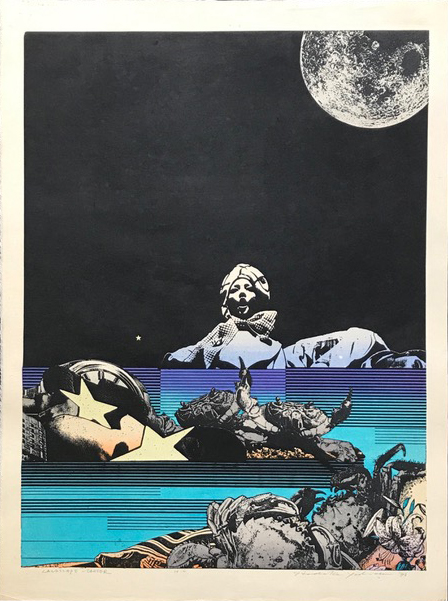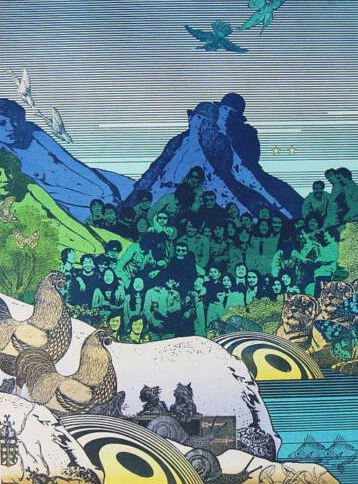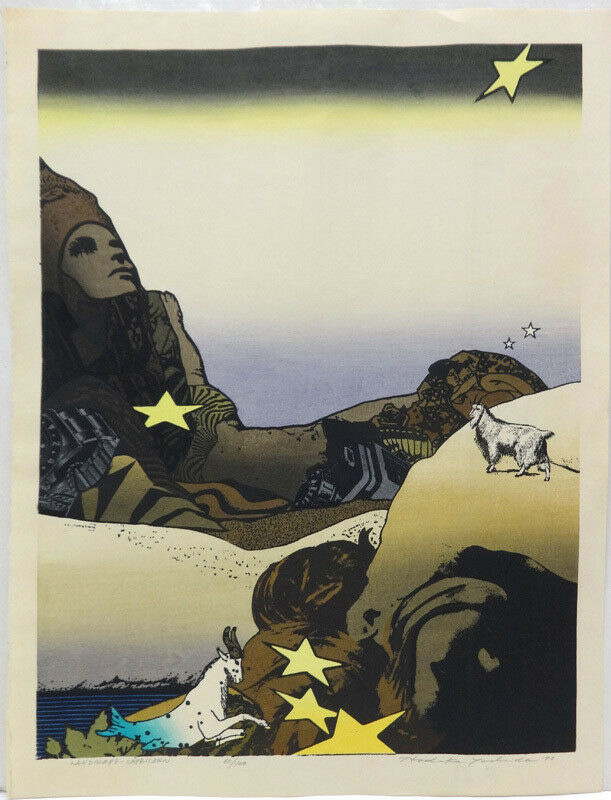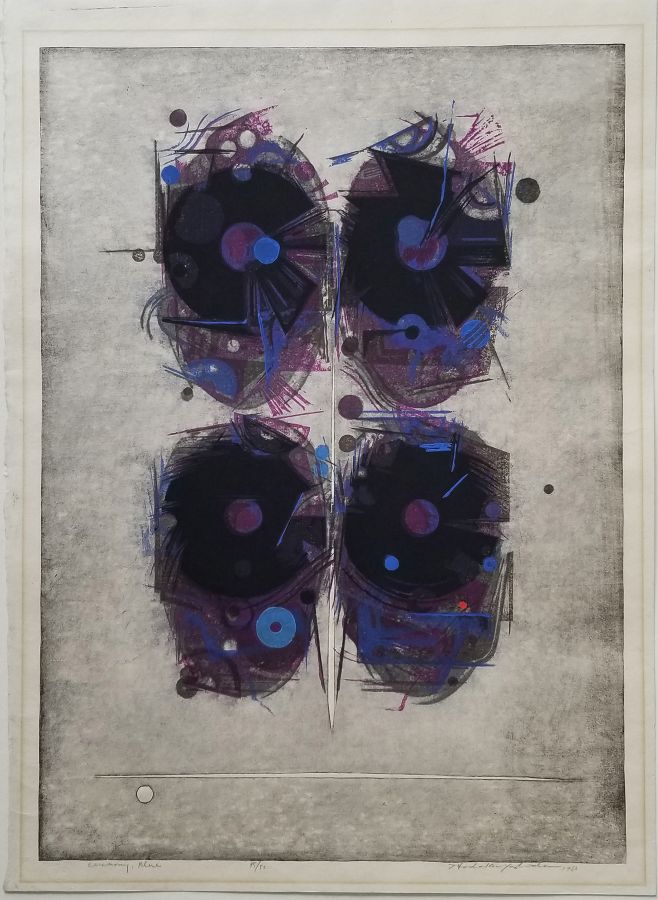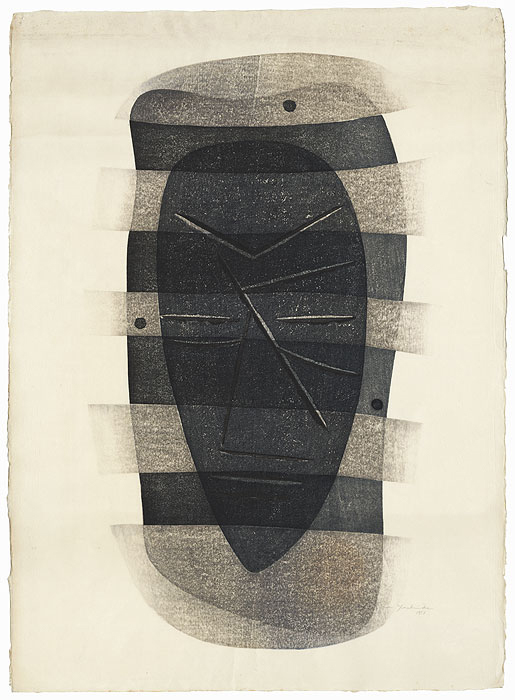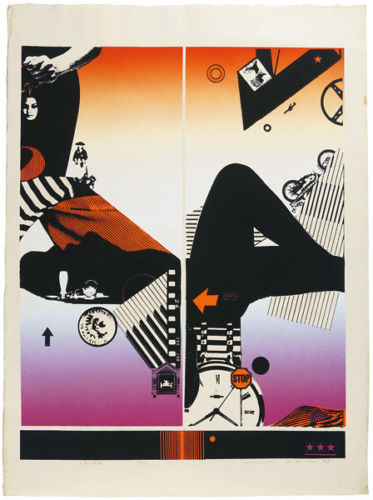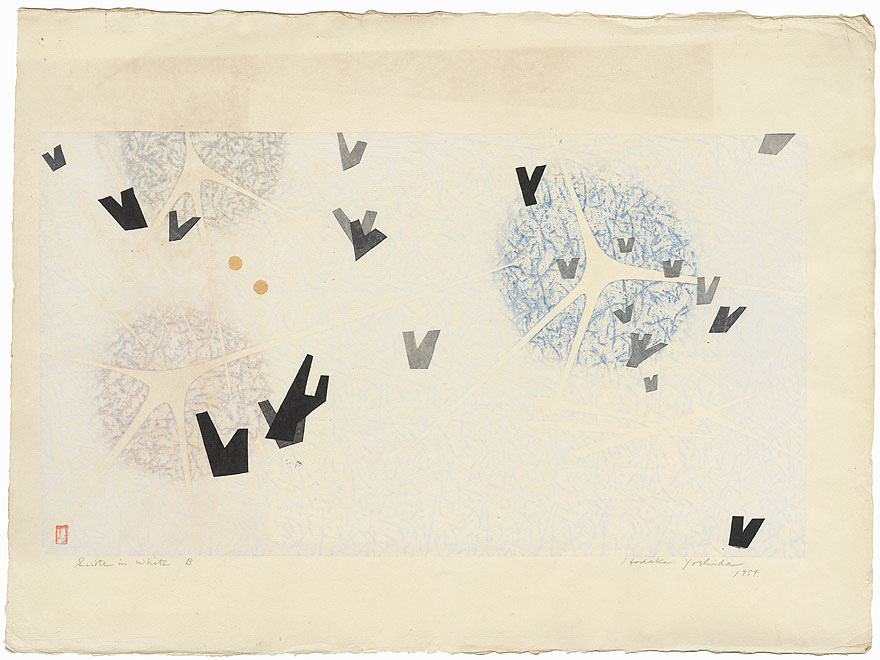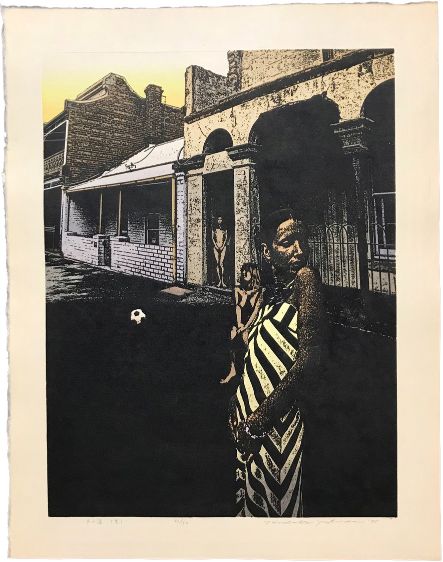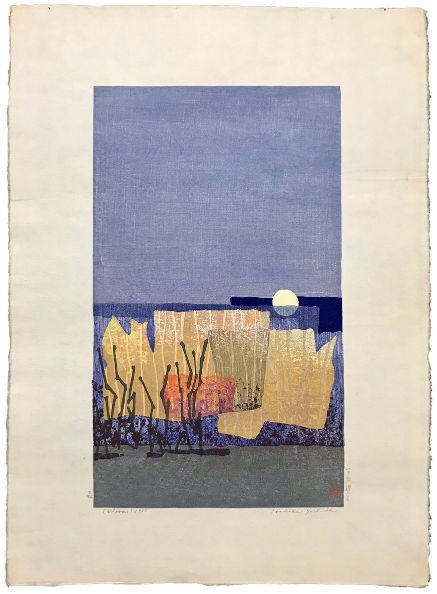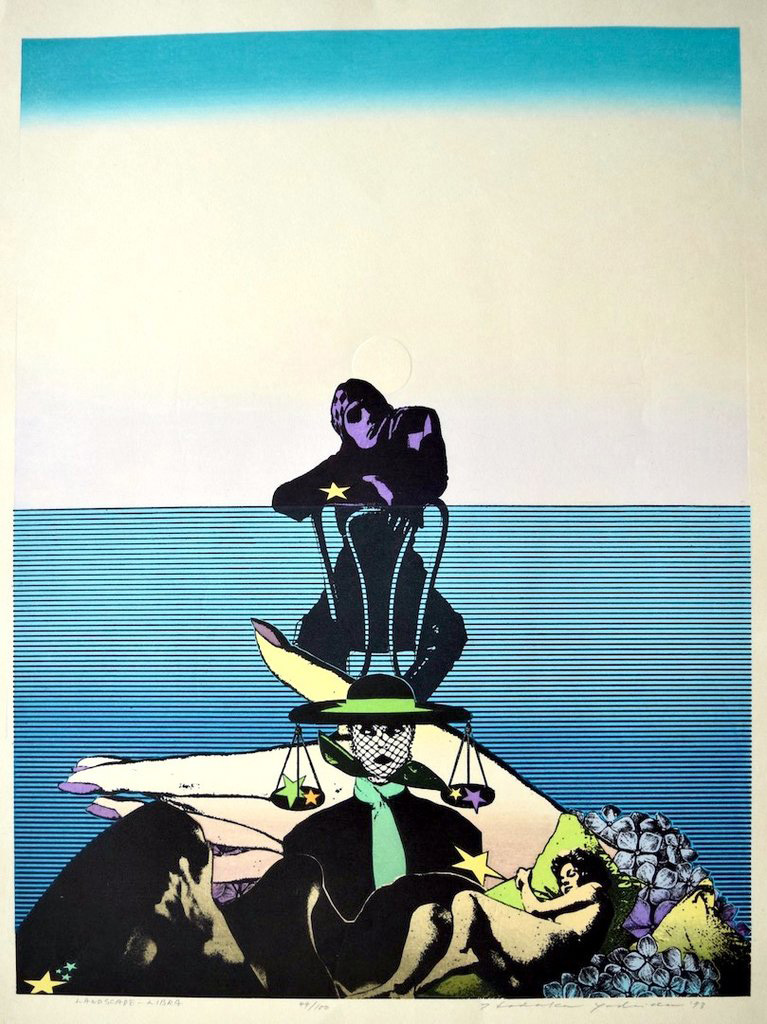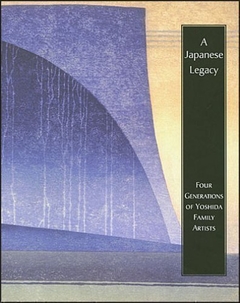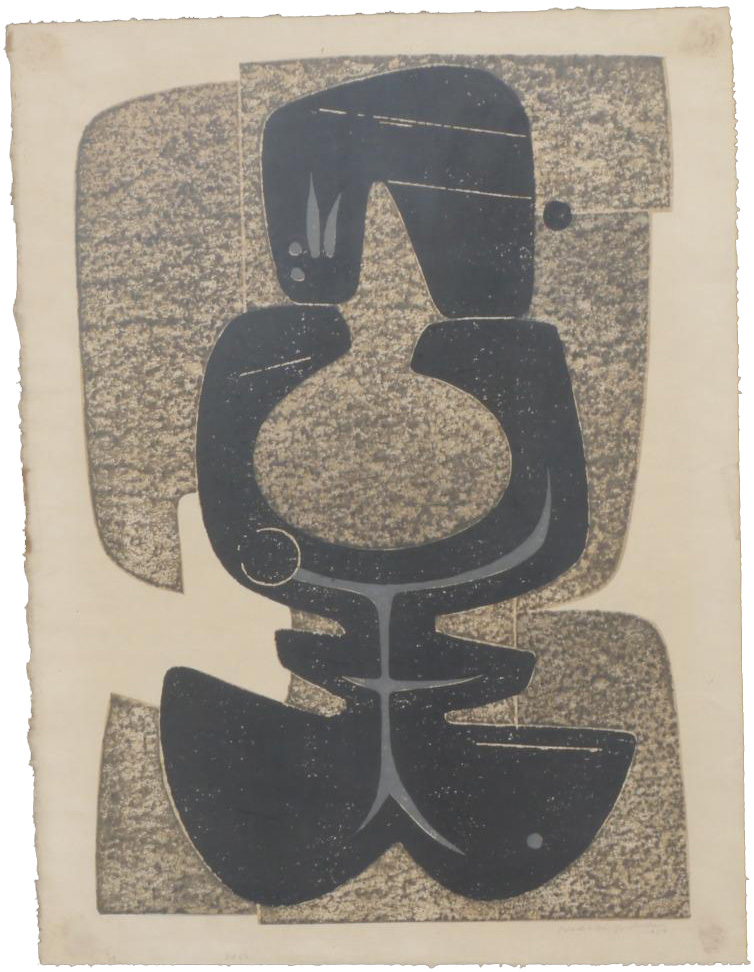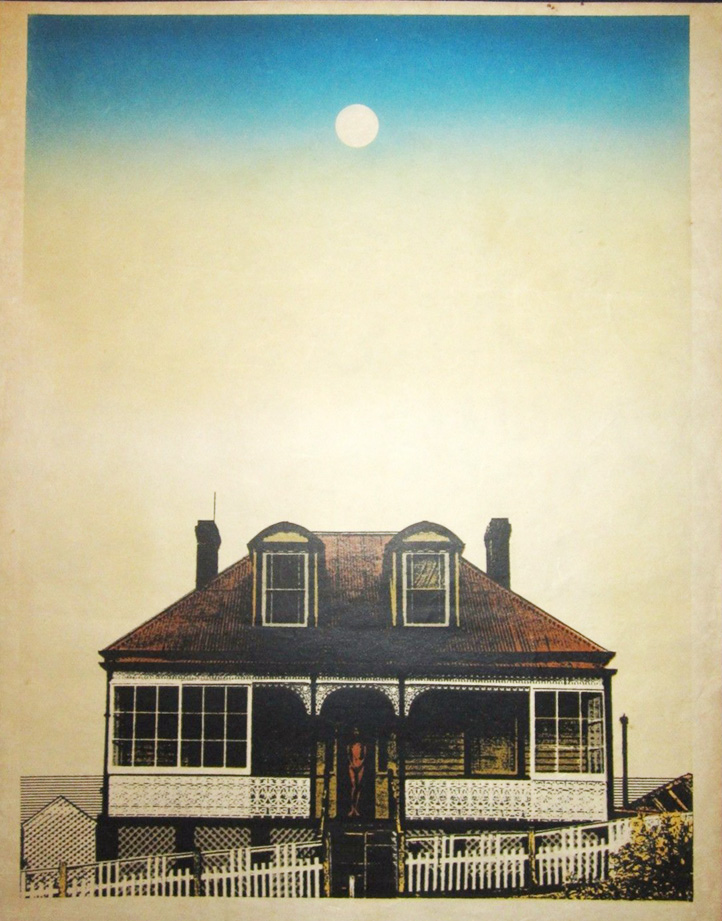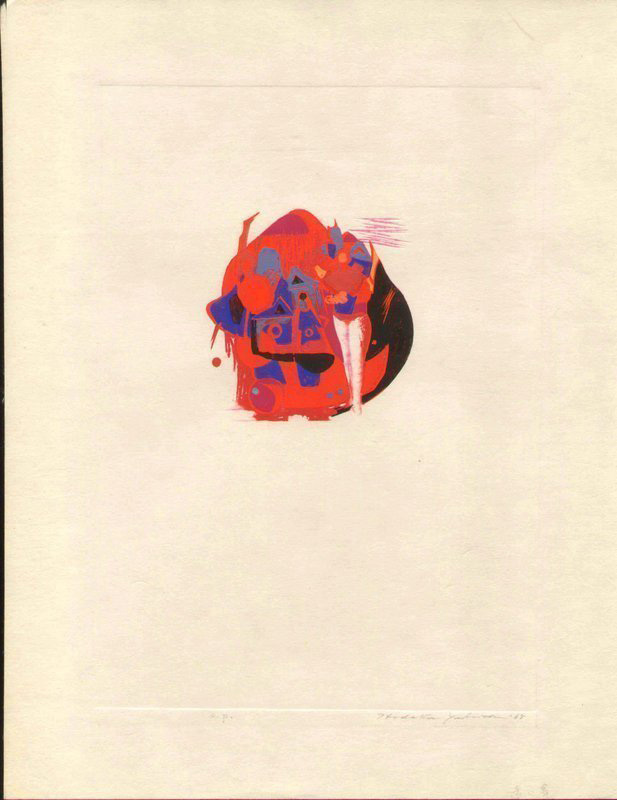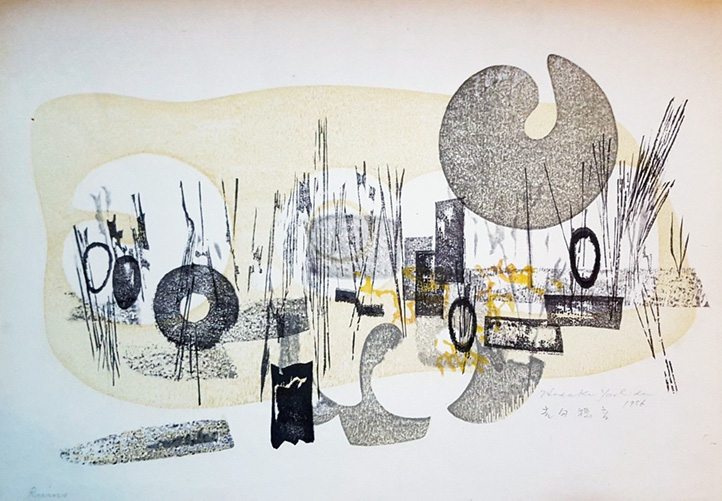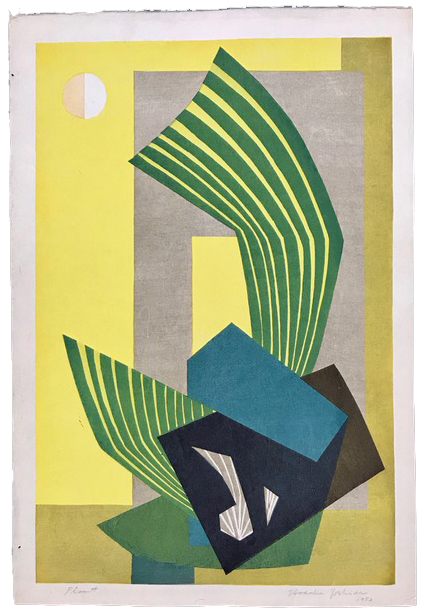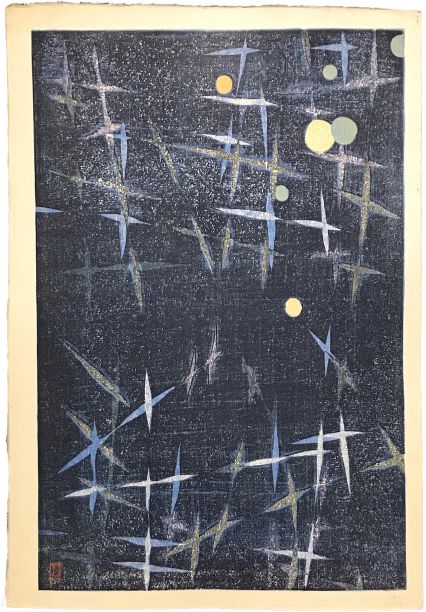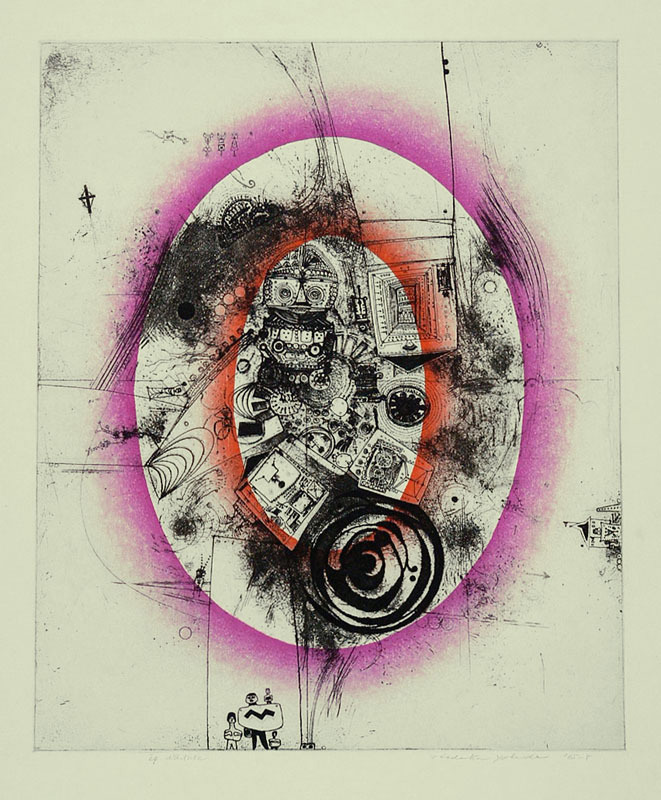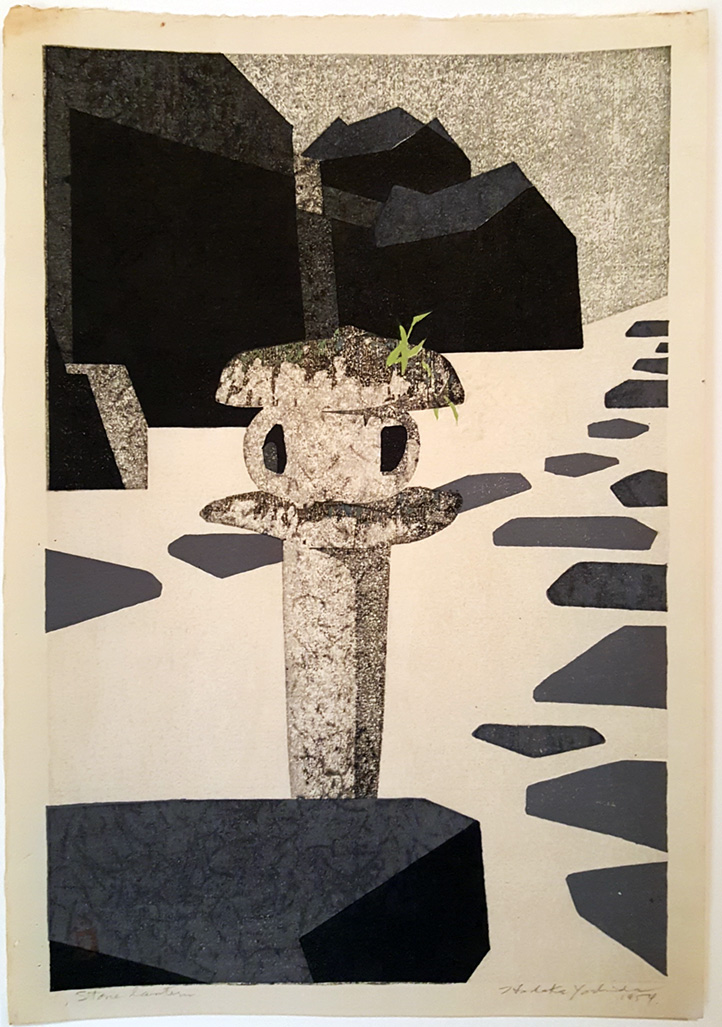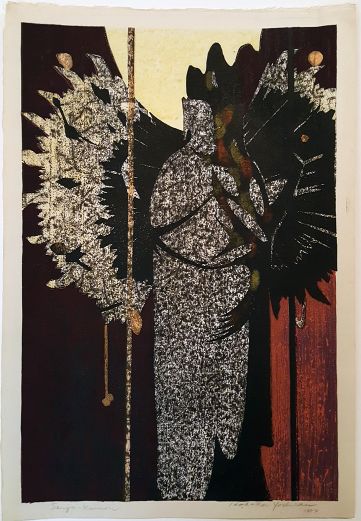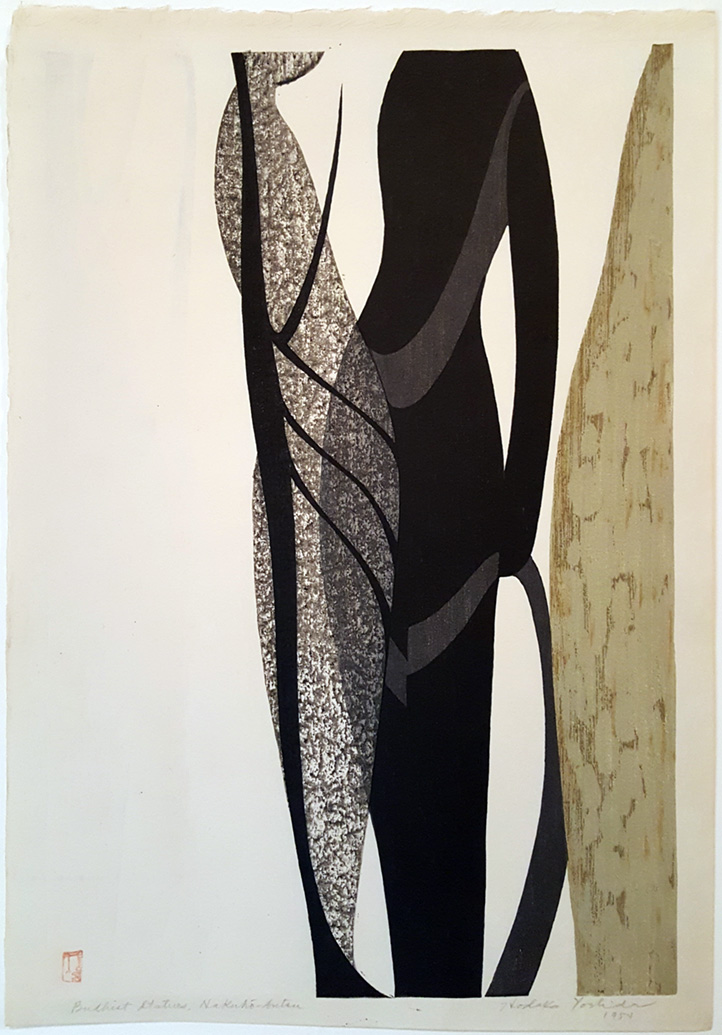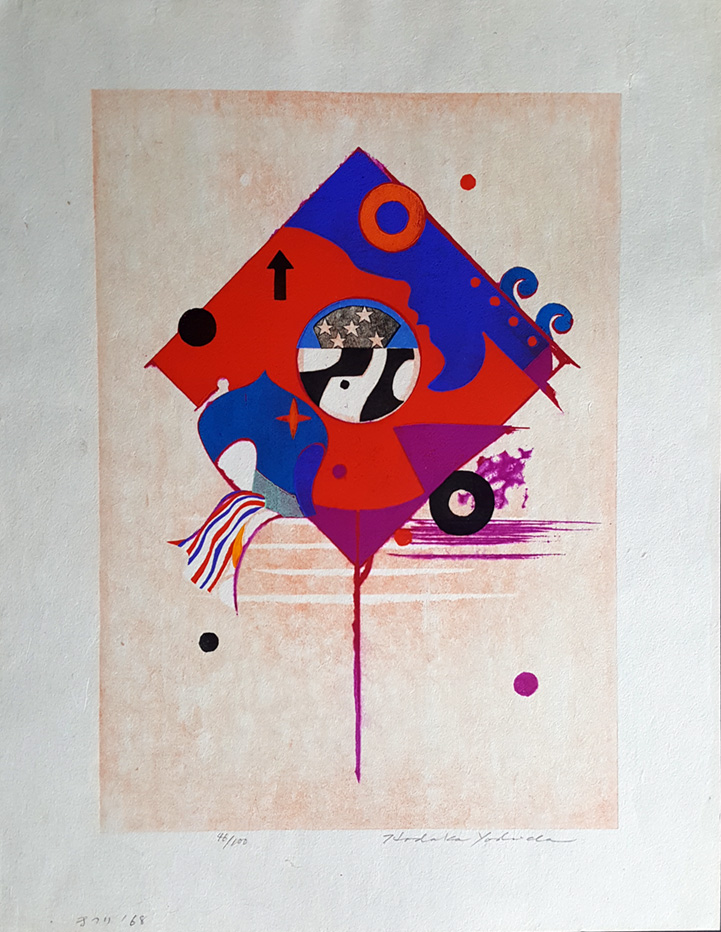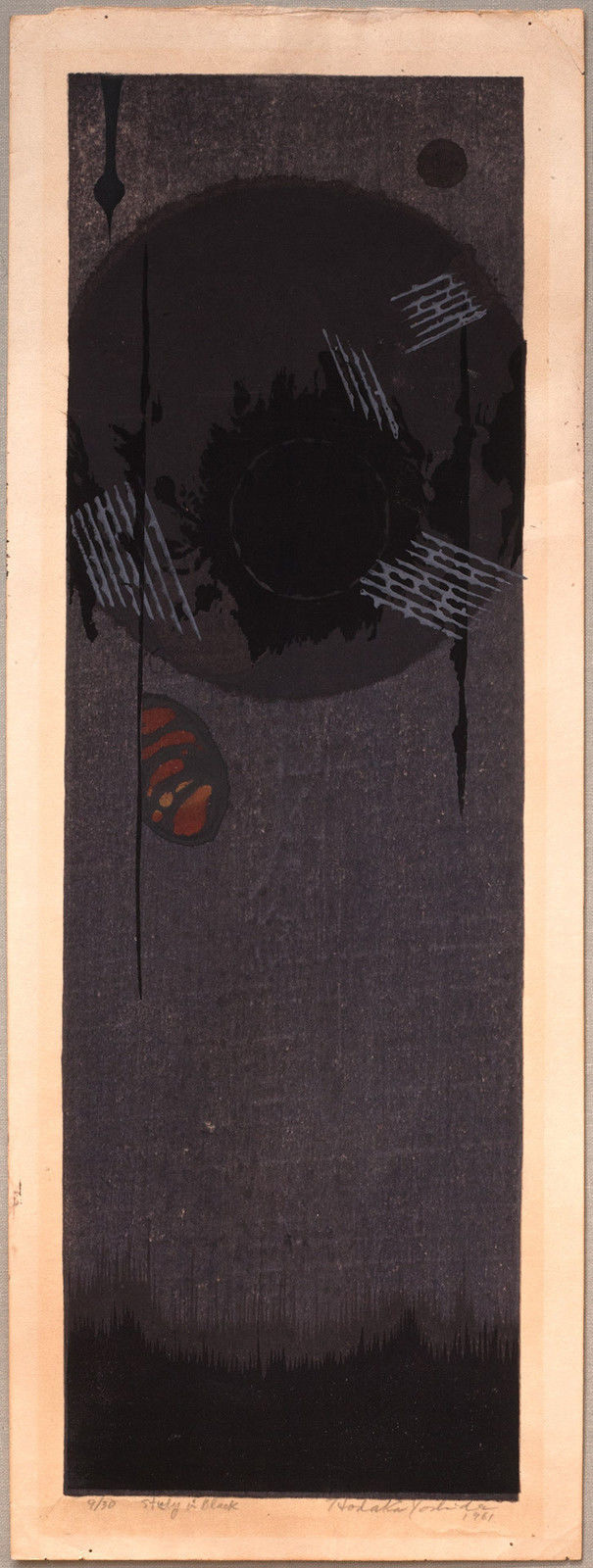Hodaka Yoshida (吉田 穂高, Japan, 1926-1995) is known for his modern, surreal, mythological, and abstract prints. He is also known as a pioneer and leader of early Japanese modernist printmaking. Hodaka broke the mold of traditional Japanese printmaking by promoting self-expression through sōsaku hanga (creative print movement) and broadening the range of once-confined style and technique.
Hodaka Yoshida was born September 3, 1926 in Tokyo, Japan to the Yoshida family - one of the most recognizable families in Japanese arts culture. Hodaka’s father Hiroshi Yoshida, his mother Fujio Yoshida, and his brother Toshi Yoshida are all renowned oil paint, watercolor, and shin-hanga woodblock print artists. Hodaka’s family encouraged him to study biology and not pursue a career in art. The family printmaking studio (today the Yoshida Hanga Academy) was struggling because of the Second World War in the Pacific, which disrupted its previous successful U.S. and European relationships and exports. Hodaka reluctantly completed his degree in biology at one of Japan’s most prominent schools, but returned to his initial artistic interests and pursuits. By then, the war ended along with Japan’s constrictive, traditional, and nationalistic pre-war art practices. Hodaka, despite his father’s disdain for abstract and non-objective art, was empowered to show his modern works after the emergence of social reform and creative acceptance in Japan and the world. He exhibited his early oil paintings in the Second Nihon Indepéndent exhibition in 1948 and then in the First Yomiuri Indepéndent in 1949. Additionally, Hodaka became a member of the prominent artist association Nihon Hanga Kyōkai (Japan Print Association) in 1952 and exhibited prints at the annual show where his art was well received.
Hodaka began his artistic career in oil painting but later shifted to woodblock printing in 1950 with his own specialized methods. The same year was also the beginning of the coined woodblock printing movement, sōsaku hanga (creative print). This movement was motivated by a desire for self-expression and strayed from the traditional ukiyo-e collaborative system where the artist, carver, printer, and publisher engaged in division of labor. Therefore, the artist took total control of the final image as the initial creator of the design. The artist also assumed the role of director of the prints, not the publishing house. Hodaka, as a result, drew, carved, and printed all of his images. In the early 1950s, Hodaka and his wife and fellow artist, Chizuko, moved to the U.S. to establish themselves as international artists. Hodaka taught woodblock printing at universities around the U.S., including Hawaii. He also traveled to Mexico in 1955 to study indigenous, pre-Columbian artifacts and architecture that inspired some of his work. In 1978, Hodaka became a committee member in the Japan Artist Association and later the Vice President of the International Artist Association. Hodaka was also one of the main researchers and organizers for Japan Print Association’s 25 Years of World Exhibitions of Modern Print Art exhibit, which was held in Tokyo in 1981.
During his early career, Hodaka explored Expressionism, Color Field Abstraction, Photorealism, and Pop Art and was said to have taken inspiration from the work of Bauhaus instructor and artist, Paul Klee (1879-1940) and Spanish abstract artist, Joan Miró (1893-1983). Hodaka mastered various traditional Japanese printmaking techniques whilst broadening the field with new and developed printing practices. Hodaka explored silkscreen, etching, lithography, monoprinting, and photo-transfers, which he used to create multi-layered and eye-catching prints. Hodaka also incorporated facets of the traditional Japanese values such as wabi (imperfection) and sabi (age), Buddhist sculpture and architecture, and Japanese clothing brocade. Hodaka’s work also delves into notions of humanity, Western mythology, nature, and primitive life. Hodaka Yoshida collector and scholar, Euguene Skibbe, broke down Hodaka’s work into nine stages (six major and three transitional), which structured Hodaka’s 45-year career: Early Prints (1950-53), Buddhist Prints (1953-54), Primitive (1955-63), Folk (1963-66), Mythology and Landscape (1966-74), House and Nude (1974-79), FMC House (1979-84), Recollection (1984-91), and Wall prints (1991-95).
Toward the end of his life, Hodaka was awarded the Purple Ribbon Decoration in 1990. On February 11, 1995, Hodaka Yoshida died unexpectedly from a brain aneurism. He is survived by his two children with Chizuko Yoshida, Ayomi Yoshida (1958-), a woodblock and instillation artist, and Takasuke (1959-), a jewelry designer. The Emperor of Japan conferred to him posthumously in 1995 the Order of the Rising Sun, Fourth class – one of the highest national decorations. Hodaka created a little over 600 art prints in his lifetime. He developed a unique artistic career marked by independence and his approach to blend modern art practices and subjects with traditional print techniques. Hodaka’s prints have been included in international biennales in Toyko, Lugano, Lubljana, Frechen and Ibiza. Additionally, Hodaka’s art works are included in major collections like the British Museum, New York Metropolitan Museum of Art, Museum of Modern Art in New York, Smithsonian Institution, Art Institute of Chicago, and the National Museum of Modern Art in Tokyo, among others.







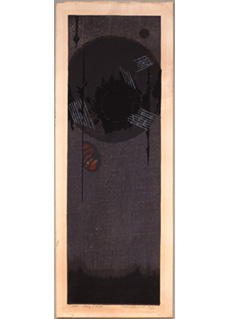
 Japan
Japan

